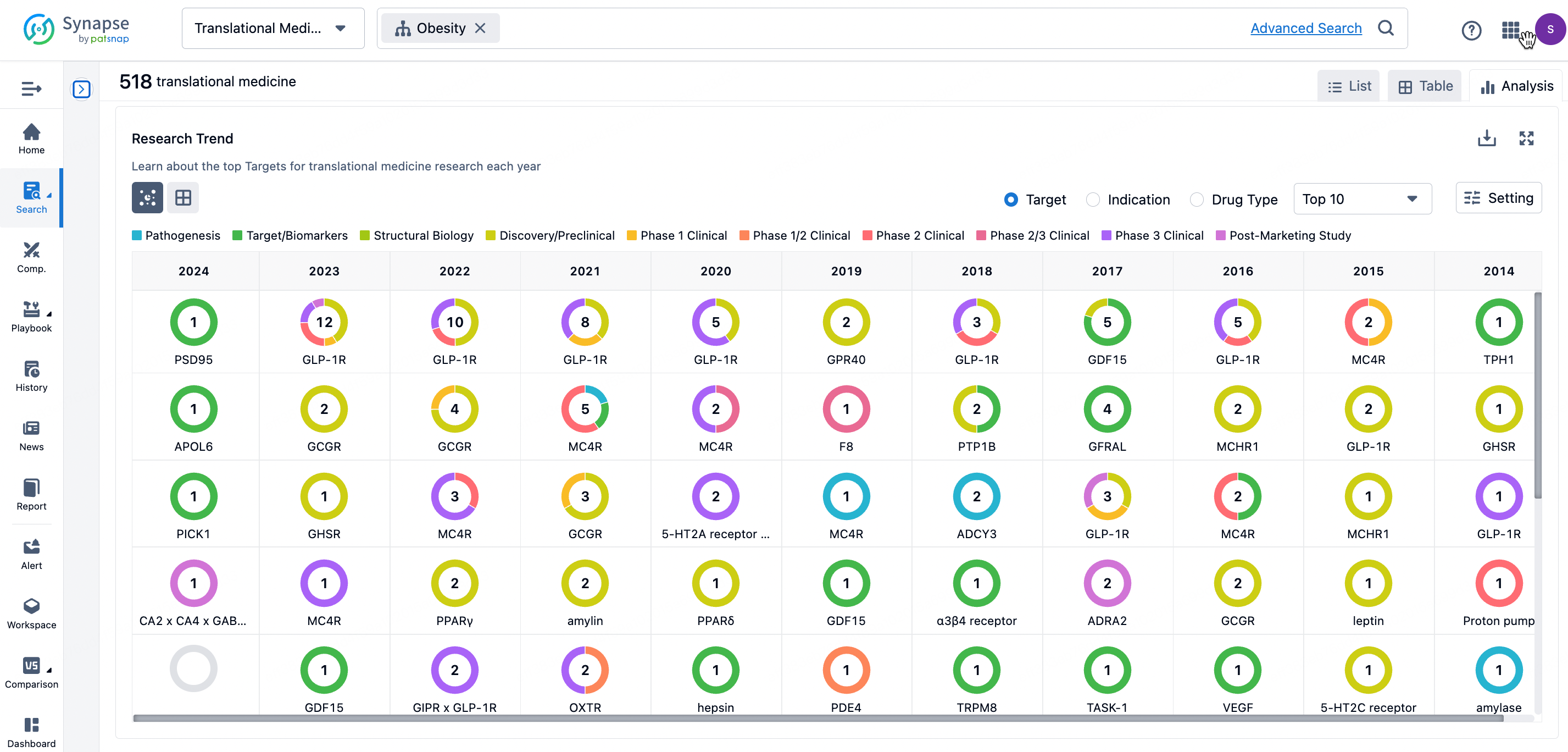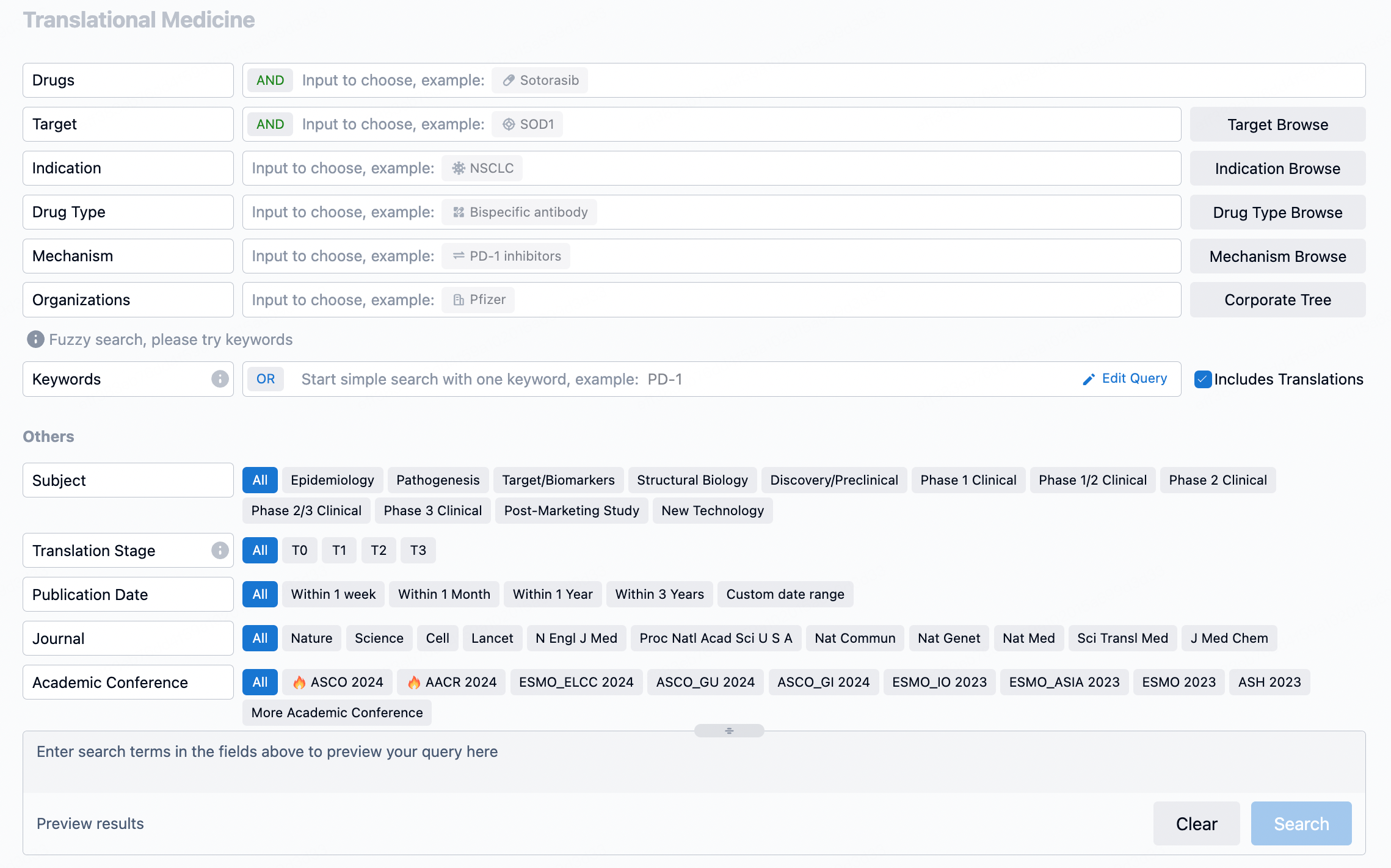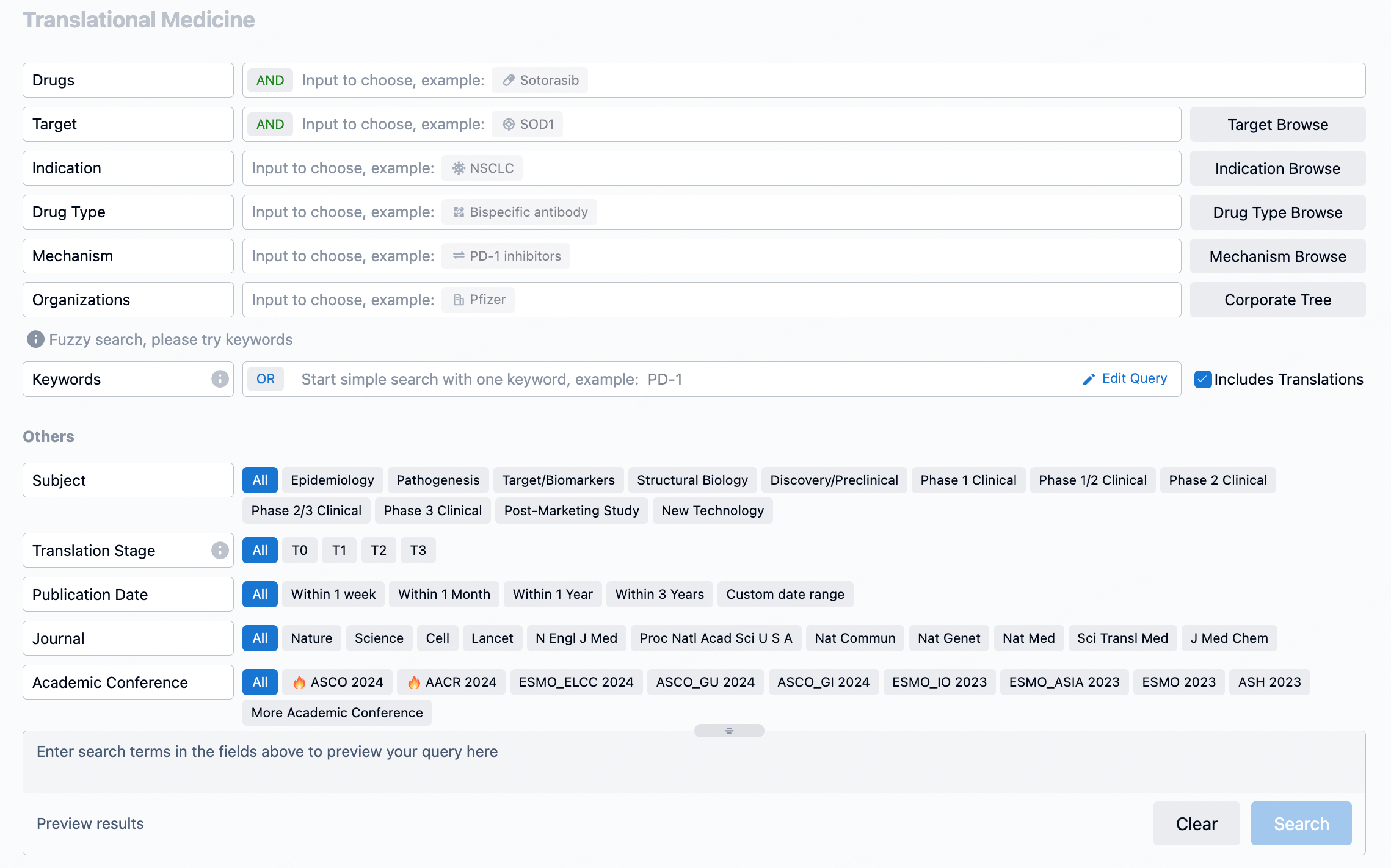Exploring the Dual Inhibitory Mechanism of Romidepsin (FK228) and Analogs: A New Frontier in HDAC/PI3K Cancer Therapy
The study characterized the properties of FK228 analogs as PI3K inhibitors and found several key points:
FK-A11 competes with ATP for binding to PI3K.
It acts as an inhibitor across all p110 isoforms.
It selectively targets PI3K out of a range of cellular kinases.
The reduction of an internal disulfide bond in FK228 analogs does not affect their PI3K inhibitory activity, in contrast to their HDAC inhibitory activity.
Molecular modeling and binding affinity analysis revealed the structural features that contribute to the potency of PI3K inhibition.
The study's findings support the concept that FK228 analogs can serve as dual HDAC/PI3K inhibitors, which could be instrumental in the development of new cancer therapeutics.
How to Use Synapse Database to Search and Analyze Translational Medicine Data?
The transational medicine section of the Synapse database supports searches based on fields such as drug, target, and indication, covering the T0-T3 stages of translation. Additionally, it offers a historical conference search function as well as filtering options, view modes, translation services, and highlights summaries, providing you with a unique search experience.
Taking obesity as an example, select "obesity" under the indication category and click search to enter the Translational Medicine results list page. By clicking on the title, you can directly navigate to the original page.

By clicking the analysis button, you can observe that GLP-1R treatment for obesity has gained significant attention over the past three years, with preclinical research still ongoing in 2023. Additionally, there are emerging potential targets, such as GDF15, among others.

Click on the image below to go directly to the Translational Medicine search interface.

